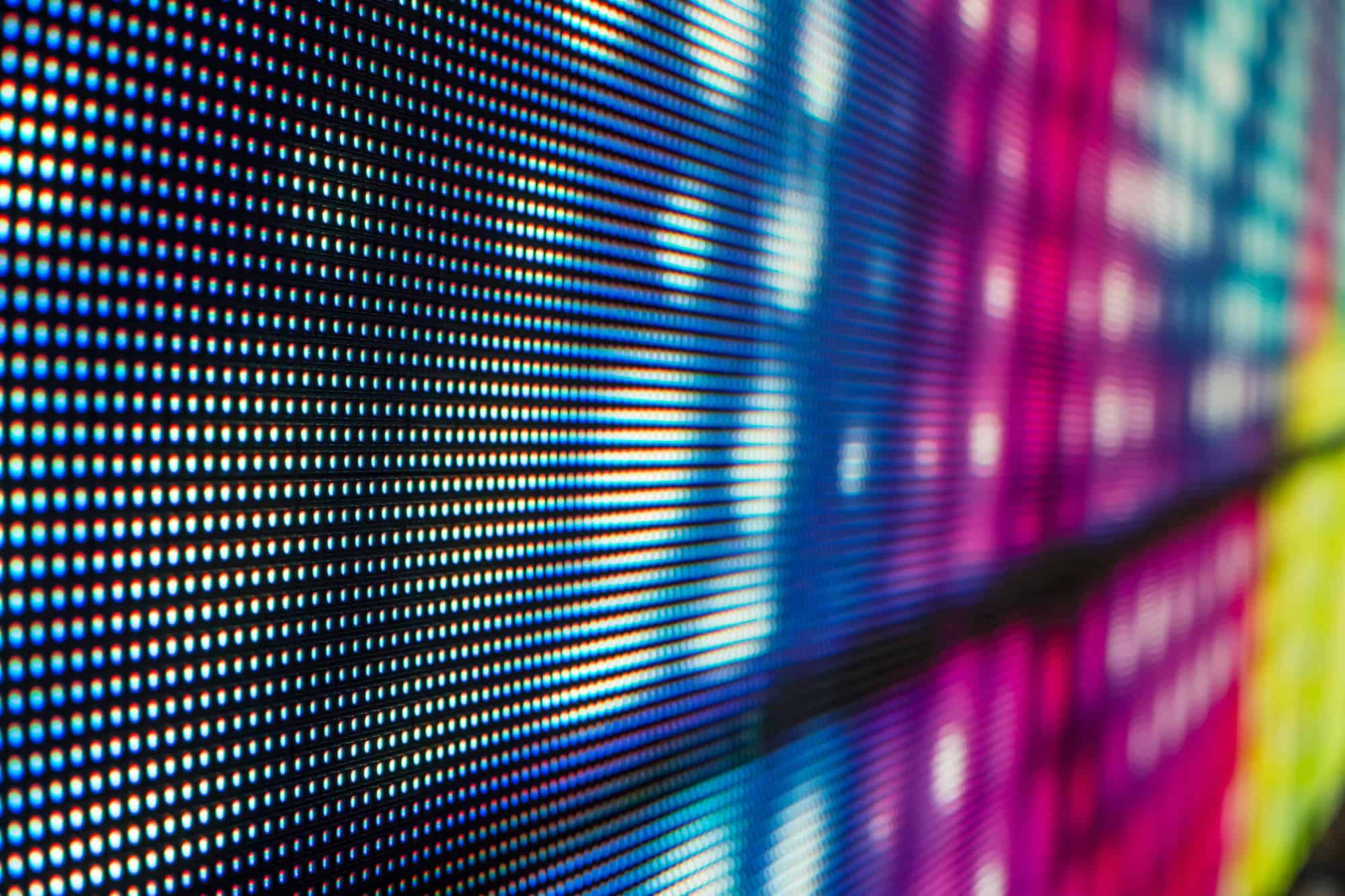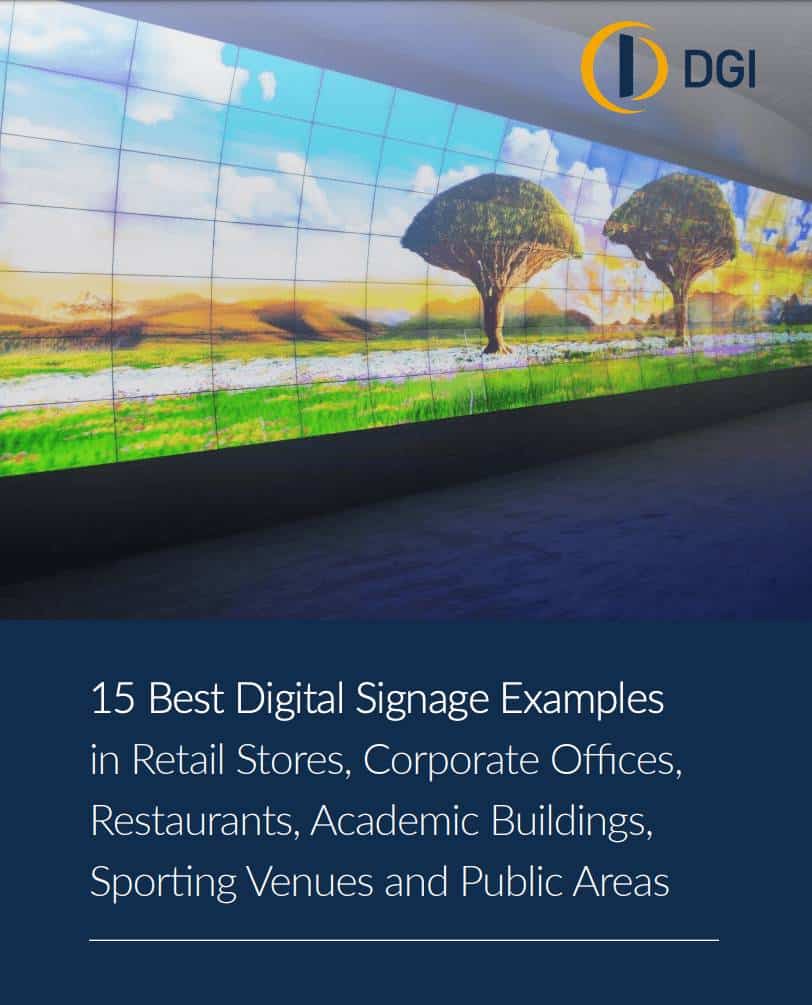In the digital age, LED technology has revolutionized visual displays with its unparalleled brightness, efficiency and versatility. From enhancing corporate environments to transforming educational spaces, direct LED video walls are now a staple in modern design.
This guide will explore key LED technologies — including surface-mount device (SMD), chip-on-board (COB) and glue-on-board (GOB) — and highlight the advantages of direct LED over traditional liquid crystal display (LCD) options.
What Is an LED?
LEDs, or light-emitting diodes, are semiconductors that emit light when an electric current passes through them. Unlike traditional lighting, LEDs are highly efficient, long-lasting and versatile, making them ideal for digital displays and signage.
Types of LED Displays
Let’s dive into the main types of LED displays that are transforming visual communications in business settings:
Surface-Mount Device (SMD) LED Displays
SMD technology integrates LEDs directly onto the surface of a circuit board, making them compact and efficient. This setup is widely used in commercial displays due to its high resolution and vibrant color output. SMD LEDs are perfect for applications where clarity and detail are paramount, such as in conference rooms and corporate lobbies. With their excellent pixel and diode selection, SMD LEDs offer superior image quality, making them a popular choice compared to other LED display types.
Chip-on-Board (COB) LED Displays
COB technology groups multiple LED chips together on a single substrate, enhancing brightness and heat dissipation. This arrangement allows for increased efficiency and a broader color spectrum, making COB LEDs ideal for large-scale video walls in lecture halls and event spaces. The result is a seamless, high-definition display that captivates audiences.
Additionally, COB displays often feature a coating on their surface, increasing durability. This is why COB LED displays are an excellent choice for environments where they may be subject to physical impact or harsher conditions.
Glue-on-Board (GOB) LED Displays
GOB LED displays are coated with a transparent adhesive, protecting them from suffering environmental damage. This added protection makes GOB displays suitable for high-traffic areas and demanding installations that are intended to provide long-lasting, vibrant visuals. For example, GOB technology is often used for LED floors, as it can withstand heavy wear and tear and support substantial weight.
Why Choose Direct-View LED Over LCD?
Direct-view LED (or, direct LED) displays offer several advantages over traditional LCDs and backlit LED technologies. These include:
- Scalability. Unlike LCDs, which have bezels that can disrupt the visual experience, direct LED panels can be configured into virtually any size and shape, providing a truly immersive display without visual interruptions.
- Brightness and Color Accuracy. Direct LED displays provide superior brightness and color accuracy — even in well-lit environments — making them ideal for dynamic digital signage solutions and impactful presentations.
- Energy Efficiency. Direct LED technology is more energy-efficient than LCDs are, leading to lower operating costs and a reduced environmental footprint.
- Durability and Longevity. Direct LED displays generally have a longer lifespan and are more durable than LCDs. This is most evident in environments where screens may be exposed to dust, moisture or physical impact.
The Benefits of SMD, COB & GOB Technologies
Each of these LED chip types offer unique benefits tailored to different applications:
- Thanks to their excellent pixel and diode selection, SMDs are ideal for high-resolution displays that demand superior image quality and feature fine detail and vibrant colors. This technology is widely used in applications where clarity and precision are essential, such as in video walls, digital signage and screens that display intricate visuals and dynamic content.
- COB technology is best suited for large, bright displays where energy efficiency and uniform light distribution is the primary focus. Its ruggedized coating also adds to its versatility and durability in challenging conditions. COBs are well-suited to environments where high brightness and color consistency are required, such as in lecture halls and event venues.
- As the most durable option, GOBs are perfect for installations that demand durability and protection from harsh environmental conditions. As we mentioned previously, LED floors are a popular application for GOB technology.
Direct-View LED vs. LCD: A Clear Choice
When comparing direct-view LED and LCD technologies, the choice often boils down to your specific needs. Direct-view LED displays excel in providing seamless, large-scale visuals with unmatched brightness and color fidelity. In contrast, LCDs, while often less expensive, may not offer the same level of visual impact or flexibility in design.
| Feature | Direct-View LED | LCD/Back-lit LCD |
| Technology | Utilities individual LEDs for direct visibility, ensuring a clear and unobstructed view. | Uses a backlight behind an LCD panel to illuminate the pixels. |
| Brightness | Provides higher brightness levels with greater efficiency, making it suitable for both indoor and outdoor applications. | Brightness can be limited by the efficiency of the backlight. |
| Color Accuracy | Superior color accuracy and consistency across the display. | Color accuracy can be affected by the quality of the backlight and the LCD panel. |
| Viewing Angles | Wide viewing angles with minimal color shift. | Viewing angles can be limited, with color shifts occurring at extreme angles. |
| Energy Efficiency | More energy-efficient as each LED can be controlled individually. | Less energy-efficient due to the need for a constant backlight. |
| Durability | High durability, with resistance to environmental factors. | Can be less durable, with even more components that can fail. |
| Scalability | Easily scalable for large displays without losing image quality. | Scalability can be challenging, especially for very large displays. |
| Applications | Large-scale signage, video walls, digital displays. | TVs, computer monitors, mobile devices. |
The Bottom Line
Choosing the right LED solution can significantly impact your business environment, enhancing everything from communication to customer engagement. At DGI Communications, we specialize in providing expert guidance and top-quality LED solutions tailored to your unique needs. Whether you’re outfitting a conference room, lobby or lecture hall, we’re here to help you navigate the world of LED technology. Contact us today to learn more about how we can support your next project with cutting-edge LED displays.

